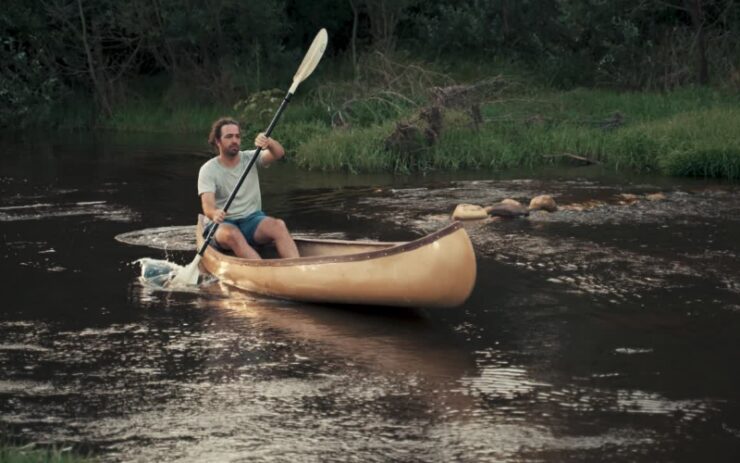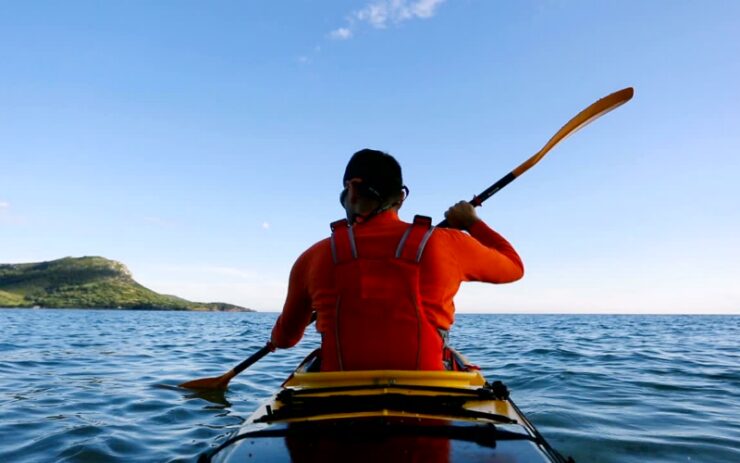Kayaking ain’t easy. Kayaking is a thrilling sport that requires getting through the water in a tiny vessel using a double-bladed paddle. It allows the boat’s operator to navigate through the waterways by facing forward and propelling forward using alternating strokes of the paddle. Usually, the paddler is seated in the cockpit, with legs extended under the deck or on the deck.
It’s an excellent sport for all ages. It’s a fantastic opportunity to explore the waters that are shallow at the edges of lakes or an exhilarating high-energy sport that involves racing through raging waters. Kayaking is for everyone and requires no prior experience in its basic structure apart from a love of adventure and exploration.
So while controlling a kayak you will need to learn some basic things on how to control the vessel. The basic things you will have to learn are how to slow down, how to go in reverse, and how to do lazy turns that will retain the power of your movement as you will need to maneuver some obstacles while kayaking on fast waters.
Kayak paddles look deceivingly easy, don’t you think? But this long shaft that has an end blade is among the most precious tools you’ll ever own when you’re an avid kayaker. So the first thing before learning how will you stroke the paddle, you need to learn that there are low holds and high holds.
Low holds are essential for any kind of movement and underway maneuvers. High holds are used when you don’t want to roll your kayak underwater or when you really want to position yourself for a tricky move.
The right holder of the paddle is when your arms and shaft are parallel to the surface where you are kayaking. The low hold is just an inch or two above the water, and the high hold is a bit higher. All that happens will go from these two positions.
Table of Contents
ToggleLearn how to paddle kayaks has numerous benefits for you, such as:
- Avoiding common injuries that can result from kayaking
- Gaining more strength with consecutive strokes
- It helps you control and navigates your kayak more effectively Particularly when paddling when opposed to currents
- Reduced fatigue
- Making it possible to travel and do big distances, by having each stroke count
- Less stress on your body and hands
There are four types of strokes that you can use when kayaking
- Forward
- Reverse
- Sweep
- Draw
Forward Stroke

The forward stroke is the essential stroke that you will be constantly doing. It is important to know that you need to pull the strength from your upper body next to the arms. You need to get your whole core to work and paddle. Concentrate on using your powerful core muscles to propel your stroke, not the weaker muscles in your arms.
Your muscles will fatigue quickly if they’re not performing the correct technique. Also, you’ll be more vulnerable to injuries. Keep your blade with a near-vertical orientation, and at a steady degree of immersion. With this, you will be in control.
This is where you need to make sure that you’re holding your paddle correctly and then you need to do the following:
- Put the paddle blade in the water on one side and prepare your body
- Starting by rotating your whole upper body while you push the blade behind you. You need to watch closely how the blade is slicing the water and focus on pushing the water with a full motion of your hands and core
- When your hand reaches behind you, you need to slice the water and pull it out, then again repeat these steps
Reverse Stroke
The reverse stroke is the move to stop the momentum of your vessel. If you stopped you can use this store to go in reverse. The process of this one is the same as the forward stroke but just in the other direction. Keep as upright as possible. You’ll stay balanced and gain effectiveness.
Sweep Stroke
The sweep stroke is the forward stroke but on just one side of your vessel. The boat will turn in the opposite direction of your motion and this is the main process when turning and rotating your boat. Let’s go through the basics of this move:
- You want to start by extending your reach and putting the blade underwater close to the position of your legs in the boat. You start your motion at the opposite end of the boat
- The motion should be a full arc where your whole torso will rotate and you need to watch how the blade goes through the water
- When the motion is at the end you need to pull the blade out of the water
Draw Stroke

This motion is used when you need to finely position your boat towards an object or a dock.
The gist goes that you need to position your paddle horizontally and then extend the paddle towards one side of the boat. Then you use your hand that is on the low side of the paddle to pull the paddle towards you, where the tip of the paddle is in the water while you do this motion.
So pull towards you and stop the motion before you come close to the side of the kayak.
You usually also need a few strokes where you can rotate the blade to achieve better results. Take a look at the following video for more instructions on the basic kayaking strokes:
With that, we hope you learned some of the basics which you will use on your next adventure. Always be careful and use your core to minimize any injuries, and practice makes perfect. Don’t expect that you will be a pro from the get-go, learning to control a kayak takes time!
Adelaide Gentry, a seasoned kayaking enthusiast and expert, is the driving force behind KayakPaddling.net. With over a decade of experience navigating the world’s most challenging waterways, Adelaide combines her passion for adventure with a deep knowledge of kayaking to provide insightful and practical guidance for paddlers of all levels.
Related Posts:
- Canoe vs. Kayak: Differences and Benefits You Need to Know
- 16 Best Kayak For Beginners 2025 - Kayaking Adventure Gear
- 10 Best Inflatable Kayak 2025 - Rivers, Lakes & Open Seas
- Best Places to Go Canoeing and Kayaking in Atlanta -…
- Power Trim Won't Go Up Or Down: 6 Reasons And Solutions!
- Best Kayak Dog Platforms, Seats, Deck, Attachments,…












